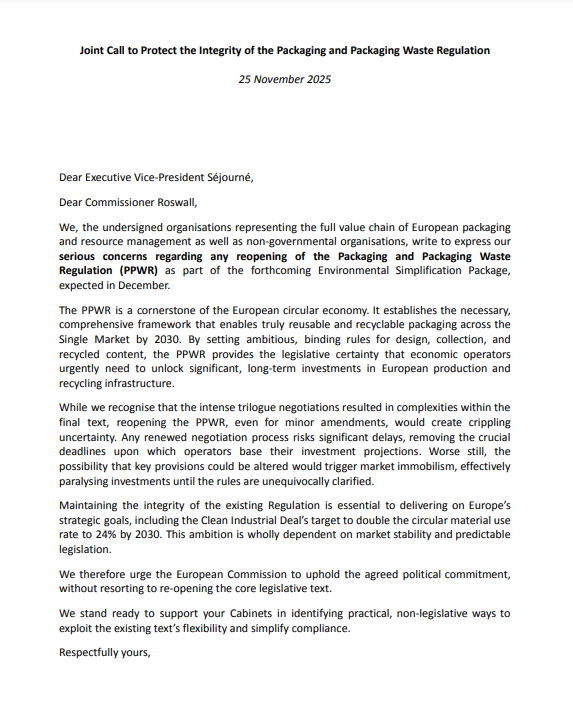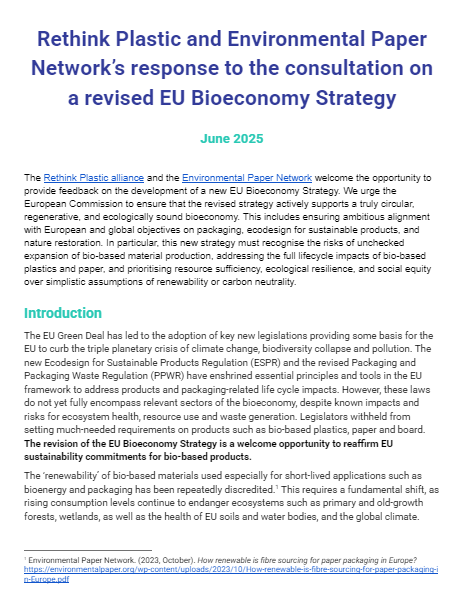Filters

We joined a coalition of 115 signatories, consisting of trade organisations, industry and national associations, reuse businesses and leading European NGOs & environmental groups to call on Executive Vice-President Stéphane Séjourné and Environment Commissioner Jessika Roswall to protect the integrity of the PPWR.

The Rethink Plastic Alliance is advocating for a CE Act that truly rises to the challenge and reflects the urgent need to reduce, reuse and recycle materials. Concerningly, the Call for Evidence suggests that the Commission’s main focus is on downstream measures. While we acknowledge and support the need to improve recycling in the EU, we are calling for a CE Act that accurately reflects the waste hierarchy and therefore also includes strong measures on waste prevention and reuse, while ensuring material loops are toxic-free.

The priority for the Rethink Plastic alliance is to ensure that the policy measures devised under this simplification initiative do not undermine the environmental objectives pursued by the legislation in question. We acknowledge and strongly welcome the statement in the Call for Evidence that the goal is not to lower the EU’s environmental objectives or the protection of human health granted by EU environmental laws.

Input to the public consultation on the draft Implementing Decision laying down rules for recycled content in single-use plastic beverage bottles, including chemically-recycled content. The proposed Implementing Decision does not comply with the principle of proportionality and exceeds the scope of the implementing power granted by the Single Use Plastics Directive.

We urge the European Commission to ensure that the revised strategy actively supports a truly circular, regenerative, and ecologically sound bioeconomy.

A Scientific Assessment of the JRC Study on European Sustainability Criteria for Plastics Recycling Technologies The aim of this report is to allow for a better understanding of the full […]

The PPWR provides many tools that governments at the national, regional and local levels can leverage to reduce packaging waste.

We, the undersigned organisations, urge you to include the plastics and polymer sector in the forthcoming first Working Plan under the Ecodesign for Sustainable Products Regulation (ESPR).

At Rethink Plastic, we have carried out our own evaluation of the SUP Directive with the contribution of the Break Free From Plastic Network, building on the previous transposition and implementation assessments published by the Rethink Plastic alliance to monitor developments since 2019, as well as recent assessments from our members on the state of play in their respective countries.